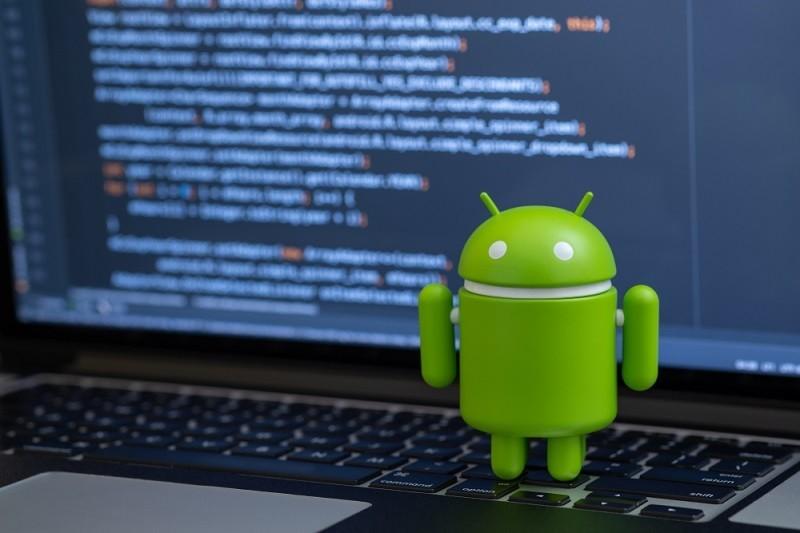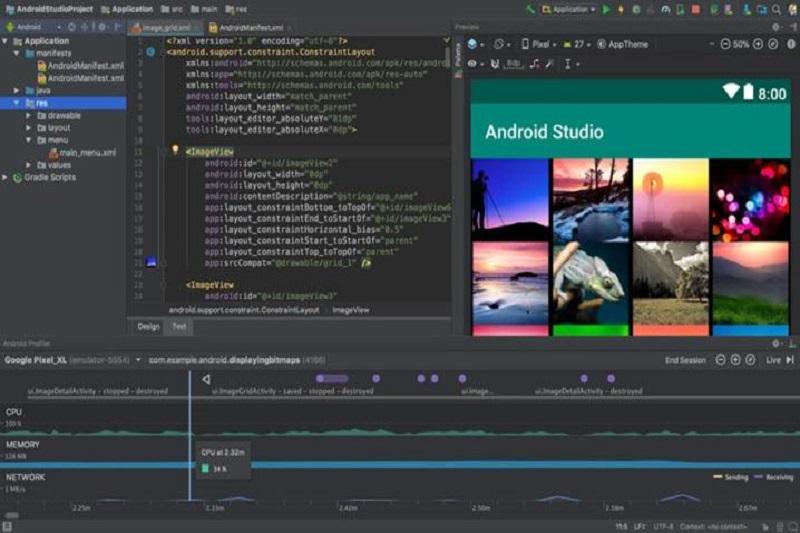11 Of The Best Android Application Development Environments For
Developing Software For Mobile Devices Is A Huge Opportunity For Developers. It Doesn’t Matter If Developers Work For Large Corporations, Small Businesses, Or Just For Fun.
In any case, their job market is prosperous.
According to App Annie, users of mobile devices around the world have spent nearly 81 billion dollars on purchasing mobile applications from Android stores.
So that this figure will reach 139 billion dollars in 2021; developing applications for Android is a money maker, even in Iran. Of course, provided you know what to do.
The statistics and figures shown in this field show why many people go to the development of applications for Android. In 2016, Evans Data reported that the worldwide mobile development population exceeded 12 million. Estimates show nearly 21 million Android developers worldwide, with half targeting Android mobile platforms.
Since Java is the most popular programming language in the world, it is not surprising that developers familiar with Java programming language go to develop Android programs. Many of these developers have chosen the Android platform because Java is Android’s native programming language alongside Kotlin. Is.
This means they don’t have to learn new skills when writing Android apps from scratch.
Also, Android is the most popular mobile platform in the world. NetMarketShare shows that Android has more than 64.38 percent of the mobile operating system market share, compared to 33.09 percent for iOS. Although Android has historically been less profitable for developers than iOS, App Annie says Google Play and third-party Android stores generated nearly $41 billion in revenue for developers in 2017, compared to iOS’s $40 billion.
For many developers, writing Android apps is a simple task, but choosing an integrated development environment ( IDE ) to write those apps is not easy. Although Android Studio is Google’s recommended option, it may not always be the best choice. Especially for Iranian users who cannot use Android Studio directly due to sanctions, even offline use of Gradle has problems.
For example, if you want to write cross-platform applications that can run on iOS or other operating systems, including Android, it might be better to choose one of the cross-platform frameworks. Of course, if the development environment you are using supports the development of Android applications, it is better to use a tool you are familiar with. But, if you are a novice developer or want to develop an app for a mobile device, you should use the most flexible tool.
Accordingly, we introduced eleven Android’s most popular development environments ( IDE ). To evaluate a product, an integrated development environment should be considered along with the robust framework or frameworks supported by the environment and the text editor it provides.
Examining the selection criteria of Android IDEs
To determine which IDEs you should choose, you should pay attention to various criteria, the most important of which should be mentioned below.
- It’s a Developer/owner of the Android development environment (Android IDE ).
- It’s a Key feature offered by the Android IDE.
- She supported programming languages.
- Target operating systems in addition to Android.
- The operating systems on which the IDE runs.
- The degree of update of the development environment
- Use it (open source, proprietary, free software, etc.)
Android IDE Developer/Owner
- When choosing an Android IDE, developers should pay attention to the company responsible for maintaining the application. Is it a for-profit company or a non-profit foundation? How long has this organization existed? Most importantly, will the organization support the tool you plan to use in the future?
Key features of Android IDE
For many mobile developers, IDE features are one of the most important considerations when deciding which IDE to use. It’s impossible to list all the features of every Android IDE in this list. However, the most important thing to look out for is the ease of use. The development tools should provide interface usability, built-in simulator and testing capabilities, integrated build tools, and debugging capabilities.
Supported programming languages
Most developers prefer to stick to the programming languages they know. How good! As such, it is critical to understand the languages supported by an IDE. Although Android initially focused heavily on Java, it is now possible to build Android applications with other languages, such as Kotlin. Also, note that some IDEs support languages that are not usable for Android development.
Targeted operating systems
Naturally, the IDE should support Android. However, many developers target other platforms besides Android. If this is you, you may prefer to use a cross-platform IDE compatible with different operating systems and supports Android.
System requirements to run the IDE
If you have a relatively modern system, you will have the hardware requirements that most Android IDEs require. Of course, some IDEs need you to install additional packages, such as the Java JDK, on the operating system. Fortunately, most IDEs can automatically detect the Java Development Kit installed on the operating system.
Latest update/stable version for Android IDE
Now we are going to introduce 11 of the best Android development environments. These development environments provide good functionality, but you need time to master them.
1. Android Studio
- Android Studio is the official development environment offered by Google for Android. This development environment supports both Kotlin and Java languages for developing applications and provides you with a powerful simulator, powerful debugging tools, and detailed technical information. Of course, as we mentioned, Iranian users may face various problems when using this development environment. Especially newbies who want to enter the world of Android development. If you plan to use Android Studio, I suggest having the development bundle in an offline form on the system, but you need a lot of free space. Nearly 300 GB is impossible!
2. Eclipse
- This open-source integrated development environment ( IDE ) is the second most popular IDE in the world. Eclipse is more than a simple IDE and allows access to a wide range of functionality.
3. Visual Studio with Xamarin
- It is my favorite IDE that Microsoft offers in different versions. This fantastic development environment enables cross-platform native development integrated with Xamarin (acquired by Microsoft in 2020). As a result, it has become a powerful tool for developing Android applications. Of course, it is also possible to use Visual Studio Code.
4. UNDERSTAND THE IDEA
- IntelliJ IDEA is a popular and well-liked option to describe a robust and ergonomic IDE for the JVM. A rich environment that does not have the problems of Android Studio, and Iranian users can use it almost without problems. Its version is also available for free. This environment is my personal choice because it is powerful, easy to work with, and offers good development tools.
5. NetBeans
- NetBeans is primarily a Java IDE but supports most programming languages. It is the official IDE for Java 8 and has many users. Moreover, it is also suitable for Android development.
6. Komodo IDE
- Comodo is one of the most potent IDEs for developing web and mobile applications. This environment also provides good capabilities to developers.
7. Cordova
- First developed by a company called Nitobi, Cordova was initially known as PhoneGap, but today it is known as Cordova.
8. PhoneGap
- PhoneGap is a development environment developed by Adobe based on the Apache Cordova open-source mobile development framework.
9. Appcelerator Titanium
- The Axway Appcelerator platform provides you with good flexibility in developing Android applications.
10. App Inventor
- App Inventor was developed to help students and novice developers with no experience building Android apps. It is necessary to explain that the MIT Institute developed the above tool.
11. AIDE
- AIDE allows you to develop Android apps or websites through your Android device. More precisely, it will enable you to code through your mobile phone.
last word
As you can see, various IDEs are available for developing Android applications, almost all of which support more than one programming language. Some of them are free, while to benefit from the commercial features of others, you have to pay; of course, it is possible to use commercial products in the way we all know! These multi-platform integrated development environments can be installed on different operating systems.



